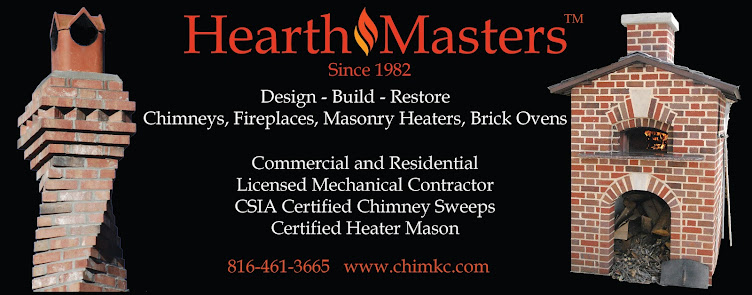Masonry chimneys should be repaired immediately following
storm or chimney fire damage in order to avoid more costly repairs in the
future.
A lightning strike or tornado can open up a masonry chimney,
making it vulnerable to attack by rain.
Once a cement crown or bricks have been blown out or severely cracked,
the interior of the chimney is open to the elements. Rain can wash out mortar joints, cause damage
to a fireplace, damper, and any metal or masonry components. When mixed with creosote, rain forms an acid
that eats away at mortar joints and flue tiles.
Water can enter through any interior open areas in the chimney,
which may include the attic or other areas of the home. This can cause damage
to drywall, wood framing, lighting, or carpet.
A chimney fire can cause expansion of the masonry, which
often forms cracks along mortar joints in exterior bricks, and occasionally
through the bricks themselves. This type
of damage usually occurs at or near the top of the chimney, but may happen
anywhere. Expansion breaks sometimes
occur when a chimney is rapidly heated during a chimney fire. Any cracks or breaks in masonry will allow
damaging rain water to enter the interior and cause further damage to the
structure.
After a lightning strike, high wind, or chimney fire it is
important to have a Level II camera inspection completed by a professional
chimney sweep, who will determine if damage has occurred to the internal
structure of the chimney. If this
inspection is not adequate, a Level III inspection may be necessary. This involves demolition of parts of the
chimney in order to view the interior.
Manufactured chimneys should be inspected following a chimney
fire or storm in order to determine if the metal chimney, fireplace components,
or exterior chase, chase top, or cap has been damaged. Manufactured chimneys are U.L. Listed
products and parts must be replaced with parts for the specific model by the
manufacturer. Parts are not
interchangeable. If left un-repaired, a
damaged manufactured wood chimney chase or metal components may be further
damaged by the elements.
Repairs should be completed by a qualified professional
chimney contractor in order to assure that the work is done according to
International Residential Code and NFPA 211 Standards.
__________________________________________________
Marge Padgitt is the publisher of Wood-Fired Magazine, and an industry writer. She has been in the chimney industry since 1985. Websites: www.chimkc.com and www.woodfiredmag.com



No comments:
Post a Comment